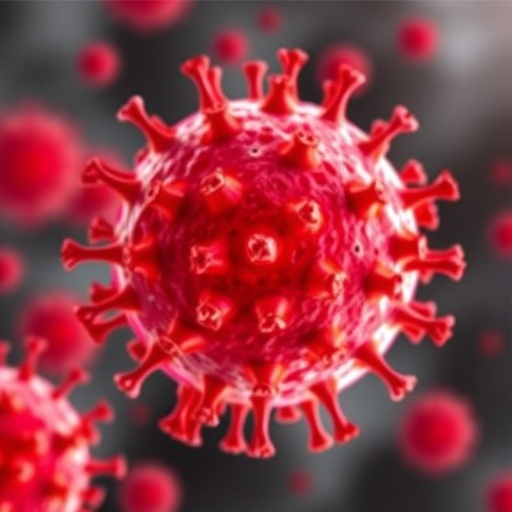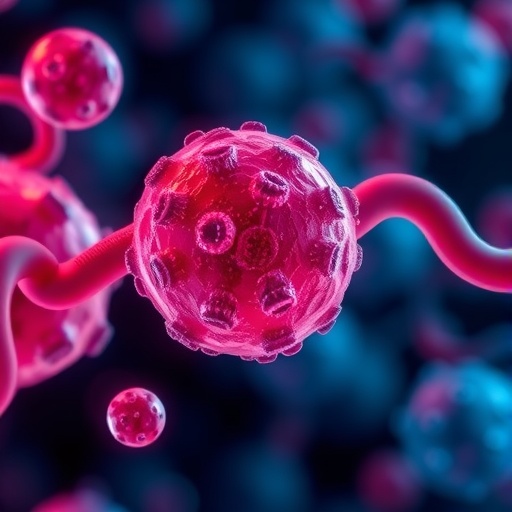In a groundbreaking new study published in Nature Communications, researchers have unveiled a previously unrecognized role of the Hippo signaling pathway’s terminal effector, yes-associated protein (YAP), in enhancing enterovirus replication within the context of type 1 diabetes. This discovery sheds light on a novel molecular interplay that may explain why individuals with type 1 diabetes are particularly susceptible to severe enterovirus infections, offering promising avenues for therapeutic intervention and a deeper understanding of viral pathogenesis in autoimmune diseases.
The Hippo signaling pathway is a critical regulator of organ size, cellular proliferation, and apoptosis, functioning through a complex cascade of kinases that ultimately modulate the activity of YAP. Under normal physiological conditions, YAP remains tightly regulated, shuttling between the cytoplasm and nucleus to influence gene transcription. However, this study reveals that YAP’s activity extends beyond its traditional cell growth roles, directly impacting viral replication mechanisms in host cells compromised by autoimmune dysfunction.
Type 1 diabetes (T1D) is characterized by autoimmune destruction of insulin-producing pancreatic beta cells, a process long suspected to be influenced or exacerbated by viral infections, particularly enteroviruses. Enteroviruses, a genus of positive-sense single-stranded RNA viruses, have been implicated in triggering or accelerating the autoimmune cascade through molecular mimicry or direct infection-induced damage. Despite epidemiological links, the molecular crosstalk facilitating enhanced viral replication in diabetic tissues remained poorly understood until now.
Geravandi, Liu, Pahwa, and colleagues systematically dissected the relationship between YAP and enterovirus replication using a combination of in vitro pancreatic beta cell models and in vivo murine systems that simulate type 1 diabetes pathology. They observed that YAP levels were markedly upregulated upon enterovirus infection in diabetic versus non-diabetic cells, suggesting a virus-induced hijacking of Hippo pathway components that benefits viral propagation.
Interestingly, the study elucidates that YAP acts as a transcriptional co-activator, promoting the expression of cellular factors that directly or indirectly aid the enterovirus replication machinery. Through transcriptomic and proteomic analyses, the team identified a suite of host genes whose upregulation corresponds with enhanced viral RNA synthesis and viral particle assembly. This transcriptional rewiring indicates that YAP activation reprograms host cells to create a more permissive environment for viral proliferation.
Moreover, the researchers probed the upstream regulatory mechanisms that cause YAP hyperactivation during enterovirus infection in diabetic contexts. They found that inflammatory cytokines prevalent in type 1 diabetes, such as IFN-γ and IL-1β, modulate Hippo pathway kinases, resulting in decreased phosphorylation and subsequent nuclear translocation of YAP. This inflammatory milieu, therefore, primes beta cells for exploitation by enteroviruses, facilitating viral persistence and intensifying cellular damage.
Given these insights, the study explores therapeutic implications. Pharmacological inhibition of YAP using verteporfin—a known disruptor of YAP-TEAD complex formation—significantly reduced enterovirus replication in diabetic beta cell cultures. Conversely, YAP overexpression enhanced susceptibility to infection, confirming its pivotal role in viral amplification. These findings highlight YAP as a promising drug target not only for limiting viral load but potentially ameliorating diabetes progression precipitated by enterovirus-mediated beta cell destruction.
The researchers connected the dots between chronic inflammation, Hippo pathway deregulation, and viral pathogenesis, framing a model wherein autoimmune diabetes inadvertently generates a cellular environment conducive to enterovirus replication through YAP activation. This model challenges previous assumptions that the autoimmune state merely results in immune-mediated beta cell loss; instead, it posits a feed-forward loop where viral replication is exacerbated by diabetic tissue signaling alterations.
In addition, the team’s use of advanced CRISPR-Cas9 gene editing and state-of-the-art single-cell RNA sequencing provided unprecedented resolution into cell-specific responses. Their data reveal heterogeneity in YAP expression and viral susceptibility among pancreatic islet cell populations, suggesting that selective targeting of YAP in specific cell types could maximize therapeutic efficacy while minimizing off-target effects.
The significance of this research resonates beyond type 1 diabetes. Since Hippo-YAP signaling plays a conserved role in various tissues, the paradigm uncovered here may be applicable to other autoimmune disorders where viral infections complicate disease progression. Diseases such as multiple sclerosis or rheumatoid arthritis, where viral triggers have been suspected, could also involve similar viral-host pathway interactions awaiting discovery.
Furthermore, the study underscores the importance of considering host-pathogen interactions in the broader context of cellular signaling networks rather than viewing infection and host pathology as isolated phenomena. The crosstalk between Hippo signaling and enterovirus replication exemplifies how viruses can co-opt fundamental cellular programs to their advantage, often exacerbating disease outcomes significantly.
The research opens new questions about the interplay between metabolism, immunity, and viral infection in diabetes. Since YAP also influences metabolic pathways, its role in modulating cellular energy states during infection may provide additional layers of viral exploitation that remain to be delineated. Future investigations exploring how metabolic reprogramming intersects with Hippo pathway activity could yield further therapeutic targets.
In vivo experiments on diabetic mouse models infected with enteroviruses demonstrated not only increased viral titers but also accelerated diabetic pathology when YAP was genetically overexpressed. This phenotypic exacerbation highlights YAP’s dual role in promoting both viral replication and diabetes progression, underscoring the protein’s potential as a biomarker for disease severity and treatment monitoring.
Importantly, the study advocates for interdisciplinary approaches combining virology, immunology, and developmental biology to tackle complex diseases. The Hippo pathway, traditionally studied in cancer and regenerative biology, emerges here as a critical player in infectious disease, demonstrating the value of cross-field insights in unraveling multifaceted disease processes.
As a closing note, the research team emphasizes the need for clinical evaluation of YAP inhibitors in the context of enterovirus-associated diabetes to assess efficacy, safety, and optimal dosing strategies. They also call for comprehensive patient stratification based on Hippo pathway activity to identify those who might benefit most from such targeted treatments.
In summarizing, this landmark study transforms our understanding of type 1 diabetes pathogenesis by illuminating the role of the Hippo terminal effector YAP in enterovirus replication. By bridging key gaps between viral infection dynamics and autoimmune disease, it paves the way for innovative therapeutic approaches aimed at interrupting this detrimental viral-host synergy. With further validation and clinical translation, these findings hold promise for improving outcomes in individuals afflicted by type 1 diabetes complicated by enteroviral infections.
Subject of Research: The role of the Hippo signaling pathway effector YAP in enhancing enterovirus replication within the context of type 1 diabetes.
Article Title: The Hippo terminal effector YAP boosts enterovirus replication in type 1 diabetes.
Article References:
Geravandi, S., Liu, H., Pahwa, H. et al. The Hippo terminal effector YAP boosts enterovirus replication in type 1 diabetes. Nat Commun 16, 8882 (2025). https://doi.org/10.1038/s41467-025-64508-6
Image Credits: AI Generated
Tags: autoimmune dysfunction and virusesenterovirus replicationenteroviruses and diabetes connectiongene transcription regulation and virusesHippo signaling pathwayinsulin-producing beta cells destructionmolecular interplay in viral infectionspositive-sense RNA virusestherapeutic interventions for diabetestype 1 diabetes susceptibilityviral pathogenesis in autoimmune diseasesyes-associated protein YAP





